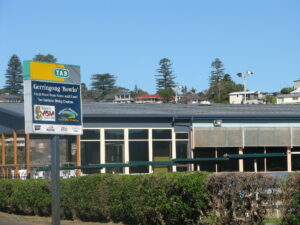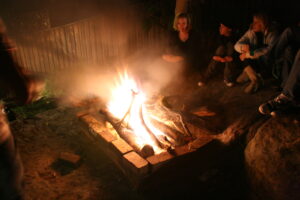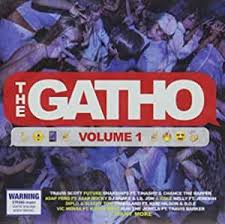Australian English includes alternate, informal forms of words and expressions, for example barbie from barbecue, sunnies from sunglasses and arvo from afternoon. These are called hypocoristics, and they express particular feelings and attitudes, and have a range of functions in Australian English. Long noted as a feature of this variety of English, they have been documented in popular Australian slang books and wider Australian English dictionaries, including the Australian National Dictionary. Over the years, linguists and lexicographers have looked at what techniques Australians use to create these forms of words, and why speakers may choose to use a hypocoristic, like mozzies, instead of an original form, like mosquitoes.
Many languages, including English, have alternate forms of words that express feelings. Most common among these are diminutives, which are often used to talk to or about children, and small things in general. They sound cute and affectionate. For example, in English, they are formed with an -ie or -y ending to a full word—someone could say in baby talk to a child ‘look at the birdie’ or ‘where’s mummy?’.

Yet although they can look similar, Australian English hypocoristics differ from diminutives and can be used in different contexts. This can be seen in the reactions of non-Australians to hypocoristics. For example, a Canadian newcomer to Australia wrote on the discussion platform Reddit of bikies (members of motorcycle gangs): ‘They sound like toddlers on tricycles and its [sic] hard not to crack up when I hear of someone rough & tattooed referring to themselves like that’. Speakers of Australian English often intuitively know that diminutives and hypocoristics have different meanings and uses.
Many kinds of words have a hypocoristic form including names for common things, generic places, occupations, social categories, and people’s first and family names. They can also include place names, many of which were recently documented in the ANDC’s 2019 appeal for nicknames for places.
common things: parmie (or parma)/parmagiana, boardies/board shorts, doco/documentary
occupations: brickie/bricklayer, journo/journalist, ambo/ paramedic (from ambulance)
social categories: surfies/surfboard riders, greenies/environmentalists, vegoes/vegetarians
generic places: servo/service station, bottle-o/bottle shop, bowlo/bowling club
personal names: Davo/David, Loz/Lorraine, Macca/Macnamara (and other Mac-names)
place names: Jindy/Jindabyne, Melbs/Melbourne, the Gabba/Brisbane Cricket Ground (located in the suburb of Woollongabba)

The most frequent way that hypocoristics are formed is by shortening a word to its first syllable and either adding an -ie ending, e.g. vollie from volunteer, or an -o ending, e.g. rego from registration. However, some other methods are used. People can simply take the first syllable of the original word, e.g. beaut from beautiful. Another kind of hypocoristic is created by using one or two syllables from the original word or expression and adding the, e.g. the Don for cricketer Donald Bradman and the Gong for the NSW city Wollongong.
The structure of sounds in English can help determine how a hypocoristic form is created. Some are formed by putting an ‘s’ or ‘z’ sound on the end of the first syllable (e.g. Teens/Tina). Sometimes a sound changes from an ‘r’ to a ‘z’ and an an ‘a’ ending may be added, e.g. Maz/Mary, Jezza/Jeremy.
When a hypocoristic comes from plural form, e.g. trackies from tracksuit pants, the plural -s is kept. Even more creative are a small number of occupations having hypocoristics based on an associated word, e.g. sparkie for electrician and chippy for carpenter. There are also hypocoristics formed from adjectives, such as toughie/tough one.
People have suggested that hypocoristic forms add extra meaning content to words: when someone says subbies for subcontractors, they are expressing a social value that the full version lacks. Hypocoristics have meanings related to informality, easy familiarity, good feelings and an in-group identity.
As an illustration of the familiarity displayed by the use of a hypocoristic, take freshies and salties for freshwater and saltwater crocodiles. If someone uses freshies or salties, they can give the impression that they are a person who knows about crocodiles. They are creating the impression that crocodiles are, to them, no big deal. Then there are some hypocoristics used to talk about things that are so much part of everyone’s lives that the alternate form is almost standard, such as rego for registration.
Although the hypocoristic luxie for a Toyota Hilux, a make of flat-bed light truck, differs in tone from a diminutive like mummy, good feelings are still conveyed. This may come from the solidarity which is displayed by the use of the form. Both the speaker and the addressee know what a luxie is, and they don’t need to stand on ceremony by using the formal Hilux.
Forms ending in -o have been said to be less about expressing good feelings and may have more disparaging meanings, such as dero for derelict, and povvo for poverty (which can be used as both a noun and an adjective). However, others have observed that this is not borne out in all cases: for example, commie (for communist) seems to mean the same as commo. Sometimes a word may have two associated hypocoristics with the form ending in -o used for a person, e.g. sickie for sick day and sicko for psychologically sick person.
Although hypocoristics occur in other varieties of English, most notably New Zealand English, they are used more often and in more contexts in Australia. Their use has been linked with what may be termed traditional Anglo-Australian male values of informality and toughness, although they are used far more widely in the Australian community.
They can have so much impact in Australia that some speakers are not aware of the original forms of the words and expressions. For example, some young people are surprised to hear that Vinnies is in fact an alternate form of the St Vincent de Paul charity. Not only would most of the community talk of Vinnies, but the organisation now uses the hypocoristic in its own public communication. Their use in formal contexts, such as by a chief medical officer advising people to clean up their back yards to avoid providing a breeding ground for mozzies, can be surprising to non-Australians, such as one Italian exchange student I spoke to.

Australian English hypocoristics, like other colloquialisms and slang, can be generational. I encountered generational differences when teaching a tutorial on the topic on the Gold Coast campus of Griffith University. Students are familiar with hypocoristics. They can be called, affectionately, the Goldies by Griffith lecturers and, disparagingly, those surfies by the university’s Brisbane student cohort. They suffer an influx of recent high school graduates in the annual rowdy schoolies (from schoolies week, derived from schoolie, a school leaver). Yet a number of the words on the tutorial problem sheet were unknown to them. Lippy (for lipstick), a term used in Australia since the 1950s, was unfamiliar, with some students confusing the term with the British English lippy used to mean insolent.

However, students introduced me to a hypocoristic I hadn’t heard of—gatho, which comes from gathering. A gatho is casual get-together with friends at someone’s house. Young people may listen to music, sit around a fire, talk, drink, and ingest substances there. A party, on the other hand, has more people and most likely dancing. While drugs and alcohol may be used at a gatho, the event is not limited to that purpose and is for enjoying hanging out with other people. Students said that they used the word gatho in asking for permission from parents to go to friends’ occasions, so this would sound less of a threat than asking to go to a party.
Events of the kind described are, obviously, not new, but Australian English must have had a so-called ‘lexical gap’ with no specific word for the concept. I am not aware of regional differences in the use of gatho, although they may exist. When asked if there was a Southeast Queensland connection, a student reported that “teenagers all over Australia have gathos”.

In the weeks following the tutorial, I asked around to get an idea of the age-group with which gatho is associated. Not everyone I asked in their mid to late twenties had heard of a gatho, but those who had associated it with people in their early twenties and younger. In fact, a few students in the tutorial were not familiar with gatho either, with one saying that he probably spent too much time at home.
Google results give similar information to that provided by undergraduate students in the tutorial. There are Urban Dictionary definitions and a discussion in a Brisbane girls school newsletter by a teacher informing parent about gathos, which contains some folk comments from senior high school students. Spotify playlists for gathos can be found along with a commercially available compilation CD ‘The Gatho Volume 1’ released in 2016. Promotional material describes the CD as ‘a brand new album of urban and hip-hop tracks, targeting 14-18 year olds who like to set their gathos with a cool urban soundtrack, to impress their friends’.

One noteworthy thing about the form gatho is its -o ending. Linguists have observed that young people do not tend to use hypocoristics ending in -o as much as older generations. Gatho provides an exception and probably attests to the importance of sound structure in determining whether an -ie or an -o is used.
People using a place name hypocoristic for an in-group identity also came into class discussion. A student mentioned the hypocoristic place name Beeno for Beenleigh, used by residents of a Brisbane suburb that is subject to social and class prejudice—what’s often called postcode prejudice. He reported but that Beeno was used by people who live in the suburb as part of a proud in-group identity in defiance of others’ judgement.
Personal names are another topic on which opinions were shared. An early study of Australian hypocoristics from the 1990s, by the linguist Anna Wierzbicka, noted that there are short forms of first names that are seen as distortions of one’s normal name, e.g. Gaz for Gavin and Soph for Sophie. They are used by people’s family and friends to convey a kind of rough warmth, but people do not normally introduce themselves by these names, in the way they may with other standard shortened forms like Tom and Jacqui. Wierzbicka observed this phenomenon as prevalent among her teenage daughters and their female friends. A list of names from this study was looked at by my linguistics class. A few of the names on the list from this early study, interestingly only those of women, are now actually considered standard, and can appear in professional email signatures: for example, Bec for Rebecca and Deb for Deborah. This could be an indication of increased informality in Australia, and the continuation of naming practices of women established during their school years.
Hypocoristics appear to be going strong in Australian English. Whether with a -ie or an -o, an -azza or an -s, they provide a way for people to be informal, familiar, affectionate, albeit in a tough way, signal an in-group identity, and of course be creative with language when they coin new versions.
Acknowledgment
Many thanks to Julia Robinson for editorial comments on an earlier version of the piece.
References
Goddard, Cliff & Anna Wierzbicka (2008). Universal human concepts as a basis for contrastive linguistic semantics. In M. de los Ángeles Gómez González, J.L. Mackenzie & E.M. González Álvarez, eds. Current trends in contrastive linguistics: Functional and cognitive perspectives. Amsterdam: John Benjamins, 205–226.
Kidd, Evan, Nenagh Kemp & Sara Quinn (2011). Did you have a choccie bickie this arvo? A quantitative look at Australian hypocoristics. Language Sciences 33(3): 359-368.
Simpson, Jane (2008). Hypocoristics in Australian English. In B. Kortmann, ed., A handbook of varieties of English: Morphology and syntax. Berlin: Mouton de Gruyter, 398–415.
Wierzbicka, Anna (1992). Semantics, culture and cognition: Universal human concepts in culture-specific configurations. New York: Oxford University Press.
Cover picture: CC pixculture. Outback Waters Servo [a remote petrol station ‘servo’, visible hypocoristic on sign]
Helen Bromhead is a linguist with a particular interest in environmental discourse, semantics and pragmatics. She is a Postdoctoral Research Fellow in Griffith Centre for Social and Cultural Research, Griffith University.








A nice dekko from Brizzie!
“Linguists have observed that young people do not tend to use hypocoristics ending in -o as much as older generations.” I hadn’t realised that -o is receding. True, some have become obsolete (susso, reffo [in the sense ‘a refugee from Europe’], commo, pinko, milko, garbo, lino), and maybe that has affected perceptions. It is still around as with the cited examples and Salvoes (alongside Vinnies), and some have arisen relatively recently (bowlo, rando, gatho, iso).
No one says “gatho”
Oi, pull ya head champ! Just cos ya never been to one!! Ya bloody derro!!